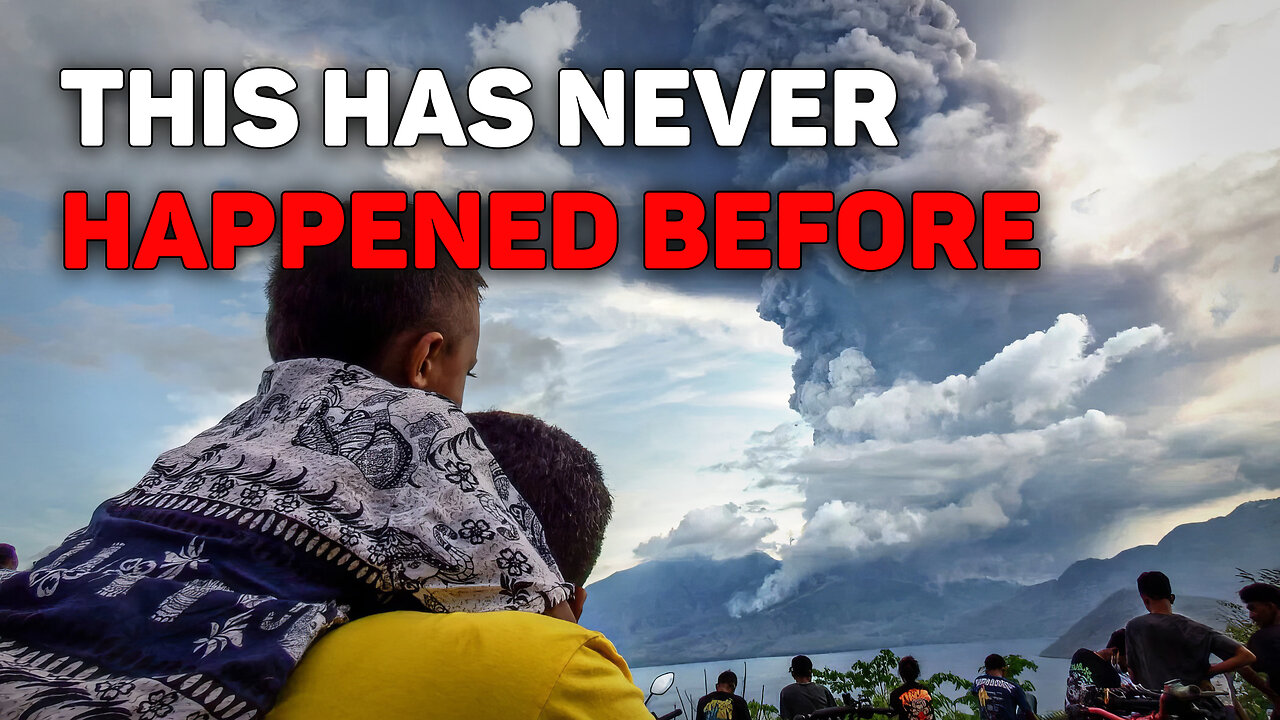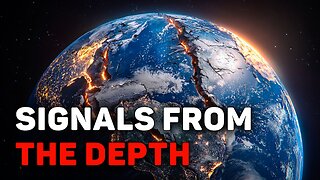Premium Only Content

The Moment EVERYTHING Changed: No One Expected an Eruption Like This!
You’ve probably noticed that over the past week, volcanic activity on our planet has surged unexpectedly. What’s even more concerning is the unusual behavior of volcanoes during eruptions.
In today’s climate event overview for November 6–12, 2024, we’ll explore these alarming anomalies and discuss what could be done to prevent catastrophic consequences in the future.
Hurricane “Rafael” devastates Cuba
On November 6, Hurricane Rafael slammed into Cuba, causing catastrophic damage. Its powerful winds crippled the national power grid, leaving over 10 million people without electricity.
Mountain Fire, California, USA
Fierce winds up to 96 km/h fueled the Mountain Fire in Ventura County. The blaze spread rapidly, consuming over 8,300 hectares, destroying 134 buildings, and injuring five people.
Record-breaking snowfalls in Colorado and New Mexico, USA
Early winter storms hit the states hard. In Denver, nearly half a meter of snow fell, marking the heaviest November snowfall in 40 years.
Unexpected eruptions of Russia’s Shiveluch Volcano
On November 7, Shiveluch erupted three times within 24 hours. The sky above Ust-Kamchatsk was shrouded in ash, turning snow gray and covering the streets in thick layers of soot. Alarmingly, the eruption occurred without the usual seismic signals, catching experts off guard.
Mud Volcano Explosion in Colombia
On November 11, Los Aburridos Volcano in Antioquia erupted violently. A plume of ash and a fiery explosion followed, causing 8 people to lose consciousness due to toxic gases.
Deadly Activity at Indonesia’s Lewotobi Laki-Laki Volcano
Recent eruptions have caused widespread damage, with ash clouds soaring 16.7 km into the atmosphere. Massive boulders, propelled up to 7 km away, left craters 15 meters wide and 5 meters deep.
Traditionally, volcanic eruptions occur when magma rises from a chamber beneath the surface. However, researchers are now observing magma ascending directly from Earth’s deep layers. This magma is hotter, chemically distinct, and rises with unprecedented force.
The likely cause? External cosmic influences are delivering energy to Earth’s inner core. This energy is converted into heat, intensifying mantle convection and accelerating magma movement. Increased planetary rotation may also amplify centrifugal forces, driving magma upwards.
The combination of heat, gas expansion, and reduced pressure triggers sudden and explosive eruptions, such as those seen at Shiveluch and Lewotobi Laki-Laki.
The signs are clear: our planet is undergoing dramatic internal changes. History suggests that similar phenomena occur in 12,000-year cycles, often resulting in rapid planetary shifts and devastating consequences for life on Earth.
The global community must act urgently. Discussions on the climate crisis must evolve into practical solutions. By uniting scientific expertise and exploring innovative approaches, we can work to mitigate these escalating threats.
This is our opportunity to stabilize the planet — before it’s too late.
-
 15:24
15:24
Creative Society
1 month agoEarthquakes of M6 Are Becoming the Norm! Something Terrifying Is Happening to the Planet
577 -
 1:26:55
1:26:55
The Daily Signal
4 hours ago $6.61 earned🚨BOMBSHELL: Minnesota Somali Fraud Scandal Gets WORSE, $8 Billion Lost, Gas & Oil Prices Plummet
21K11 -
 17:44
17:44
tactical_rifleman
10 hours ago $3.72 earnedMilitary's New Belt-Fed Machine Gun | MCR | Tactical Rifleman
15.9K10 -
 13:10:29
13:10:29
LFA TV
23 hours agoLIVE & BREAKING NEWS! | FRIDAY 12/05/25
222K23 -
 2:09:03
2:09:03
DBoss_Firearms
3 hours ago $0.67 earnedD'Boss Firearms is LIVE! Help me vote for the Gundies!
13.8K -
 3:14:14
3:14:14
Nerdrotic
8 hours ago $20.68 earnedHollywood PANICS! Netflix WINS Warner Bros | RIP Star Trek - Friday Night Tights 383
143K11 -
 1:33:57
1:33:57
Russell Brand
8 hours agoThe Venezuela Flashpoint: How Fast Could This Spiral? - SF659
163K29 -
 1:26:58
1:26:58
vivafrei
8 hours agoJan. 6 Suspect ADMITS to Planting Bombs, Claims to be Trump SUPPORTER? The Blaze RETRACTS? & MORE!
74.7K116 -
 22:00
22:00
Jasmin Laine
6 hours agoTrump’s Peace Medal Triggered the Biggest Liberal Meltdown of the Year
31K29 -
 30:47
30:47
The HotSeat With Todd Spears
7 hours agoEP 221: Bonus Friday Episode! 2025 Spotify Recap
41.8K55